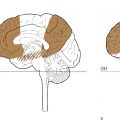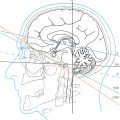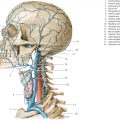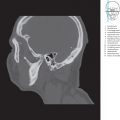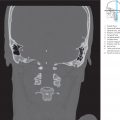11 Neurotransmitters and Neuromodulators
Neurotransmitters convey signals at the synapses between neurons or between neurons and effector organs (muscle cells, glandular cells). Neuromodulators presynaptically influence the amount of neurotransmitter being liberated or its reuptake into nerve cells. Neuromodulators also regulate the sensitivity of transmitter receptors postsynaptically. A transmitter receptor is a protein in the cell membrane of a nerve or glial cell; one end of the receptor lies in the extracellular space and the other in the intracellular space. Neuromodulators thereby regulate the degree of excitability at the synapses and alter the effect of neurotransmitters. Neuronal information processing at the synapses is thus more complex due to different regulatory mechanisms than was previously assumed. Neurotransmitters and neuromodulators are grouped together as neuroactive substances.
Several neurons contain more than one neuroactive substance.252 , 370 Nerve cells containing more than one neurotransmitter release only one transmitter on stimulation. A single neurotransmitter, acetylcholine, for instance, may have either excitatory or inhibitory effects depending on transmitter receptors of postsynaptic neurons. Dopamine has been proven to function both as a neurotransmitter and a neuromodulator.422 These diverse effects of transmitters indicate their manifold functions in the central nervous system. Several neuroactive substances are usually involved within a neurofunctional system; as a corollary, one neuroactive substance generally influences several neurofunctional systems. This may be illustrated, for example, by different sites of action of dopaminergic neuronal groups. Nigrostriatal neurons target the motor system of the basal ganglia (see ▶Section 10.8.2), mesolimbic neurons target the limbic system (see ▶Section 10.11), tubero-infundibular neurons target the hypothalamo-hypophysial system, and a small group of neurons (A15) target the olfactory system. These neuronal groups are only parts of different neurofunctional systems. This knowledge is important for interpretation of pharmacologic actions and side effects.
Nieuwenhuys422 provided an interesting overview of the chemo-architecture of the brain. He suggested three new terms that describe the topical arrangement of some of the neuronal groups referred to in the following chapters:
The so-called core is a periventricular area in the brainstem and forebrain, the nerve cells of which are rich in neuromodulators. Paracrine release of the active substance occurs from these nerve cells, delivering the active substance via the intercellular space to their neighboring cells (i.e., not via synapses).
A functional connection most likely exists with circum-ventricular organs which do not possess a blood–brain barrier and, therefore, seem to be especially well-suited for neuroendocrinal regulation. The following areas belong to the core: posterior (dorsal) nucleus of the vagus nerve (see ▶Fig. 6.5b), the superficial zone of the spinal nucleus of the trigeminal nerve (see ▶Fig. 6.4b and ▶Fig. 6.5b), parabrachial nuclei, central periaqueductal gray substance (see ▶Fig. 3.10a and ▶Fig. 6.12c), small periventricular nuclei of the hypothalamus, septal nuclei (see ▶Fig. 10.39 and ▶Fig. 10.42b), and parts of the limbic system (see ▶Section 10.11).
The median paracore lies adjacent to the core in the center of the tegmentum of the brainstem and consists of a series of raphe nuclei containing, among others, serotoninergic nerve cells (see ▶Section 11.2).
The lateral paracore lies adjacent to the core in the anterolateral part of the tegmentum of the brainstem and contains catecholaminergic (see below) and some cholinergic neurons (see ▶Section 11.4).
11.1 Catecholaminergic Neurons
Cell bodies and cell processes of catecholaminergic neurons contain transmitters dopamine, noradrenaline, and adrenaline. These molecules are derived from the amino acid tyrosine. Dihydroxybenzol is produced during the biosynthesis of these transmitters, and is a central catechol moiety, forming catecholamines together with a side chain and an amino group. Dopamine, noradrenaline, and adrenaline are relatively small molecules and consequently diffuse out of nerve cells and their axons soon after death. Thus conventional histologic techniques cannot be reliably used to map sites of production and storage of these compounds.
Dopaminergic, noradrenergic, and adrenergic neurons were identified by freezing living nerve cells in vivo, drying them and visualizing them on fluorescence microscopy.
Green fluorescence of dopamine and noradrenaline160 was demonstrated using histochemical methods in 1962. Today, highly sensitive immunofluorescent methods enable a more accurate detection of catecholaminergic neurons. Noradrenergic and dopaminergic neurons were labelled A1 to A15 and adrenergic nerve cells C1 to C3. An ascending numbering sequence was selected for the brainstem, that is, from inferior to superior.
The localization of catecholaminergic neurons is the subject of research even today. Data obtained thus far from rats and lower primate brains must be extrapolated to the human brain.
Dopaminergic, noradrenergic, and adrenergic nerve cell groups, however, correspond closely in the adult human brain with neuromelanin-containing neurons,61 , 509 which provide the first line of information about catecholamine-containing cell populations in neuropathological specimens. The nigrostriatal dopaminergic system is of interest in Parkinson’s disease and its therapy.
11.1.1 Dopaminergic Neurons
Dopamine-synthesizing nerve cells are found in the midbrain, diencephalon, and telencephalon. The largest and most striking group of dopaminergic nerve cells is the pars compacta of the substantia nigra (A9; see ▶Fig. 3.9a, ▶Fig. 4.3a, ▶Fig. 5.7, ▶Fig. 6.12b, ▶Fig. 6.13b, ▶Fig. 7.45, and ▶Fig. 10.24). Their axons form an ascending pathway that runs through the lateral part of the hypothalamus and traverses the internal capsule. The nigrostriatal fibers then run to the striatum (caudate nucleus, see ▶Fig. 3.6a, ▶Fig. 3.6b, ▶Fig. 3.8a, ▶Fig. 3.8b, ▶Fig. 3.10a, ▶Fig. 3.10b, ▶Fig. 4.3a, ▶Fig. 4.3b, ▶Fig. 4.4a, ▶Fig. 4.4b, ▶Fig. 4.5a, Fig. 4.5b, ▶Fig. 5.9a, ▶Fig. 5.9b, and ▶Fig. 5.24 and Putamen, see ▶Fig. 3.7a, ▶Fig. 3.7b, ▶Fig. 3.9a, ▶Fig. 3.9b, ▶Fig. 4.4a, ▶Fig. 4.4b, ▶Fig. 4.5a, ▶Fig. 4.5b, ▶Fig. 5.8, and ▶Fig. 5.23). The A9 nerve cell group forms the nigrostriatal system together with a small group of A8 nerve cells from the reticular formation of the midbrain. The substantia nigra belongs to the basal ganglia in keeping with its synaptic connections (see ▶Section 10.8.2).
A second dopaminergic nerve cell group runs from the A10 cell group in the midbrain to parts of the limbic system and is therefore termed “mesolimbic”. Drugs affecting this system are believed to produce psychic effects.373 The A10 group lies in the form of an anterior “cap” over the interpeduncular nucleus in the tegmentum of the midbrain. The axons run in the medial forebrain bundle to the following structures of the limbic system (see ▶Fig. 10.39):
Inner nucleus of the stria terminalis
Olfactory tubercle
Nucleus accumbens,
Septal nuclei
Several parts of the frontal, cingulate, and entorhinal cortex
Certain substances such as opiates, cocaine, and alcohol are perceived as a reward by the mesolimbic system and may therefore trigger the “reward mechanism”. This mechanism may therefore be regarded as the neurobiological basis for drug addiction.
A third dopaminergic system, termed tuberoinfundibular, lies in the diencephalon. The A12 cell group lies in the tuber cinereum (see ▶Fig. 4.2d) and projects to the infundibulum (see ▶Fig. 3.1c, ▶Fig. 4.2a, ▶Fig. 4.2b, ▶Fig. 5.1c, ▶Fig. 5.6a, ▶Fig. 5.6b, ▶Fig. 5.21, ▶Fig. 6.3, and ▶Fig. 6.11b). This system is believed to have a neuroendocrine function. The other diencephalic nerve cell groups A11, A13, and A14 and their target cells are also located in the hypothalamus.
A small group A15 lies scattered within the olfactory bulb (see ▶Fig. 3.1c, ▶Fig. 3.3a, ▶Fig. 3.3b, ▶Fig. 5.1c, ▶Fig. 5.1d, ▶Fig. 5.6a, and ▶Fig. 6.11a) and is the only telencephalic dopaminergic group of neurons.
Clinical Notes
Dopamine deficiency, especially in the substantia nigra, is of clinical significance since therapeutic substitution is used in the treatment of Parkinson’s syndrome (see ▶Section 10.8.2).
Dopamine and its agonist bromocriptine function as adenohypophysiotropic prolactin-inhibiting factors. This explains the clinical use of bromocriptine for the conservative treatment of prolactinomas, in addition to its use in the treatment of Parkinson’s disease.
11.1.2 Noradrenergic Neurons
Noradrenergic nerve cells are found only in a narrow anterolateral zone of the tegmentum of the medulla oblongata and pons. Although the A1 to A7 cell groups were originally described in rats,116 , 117 a similar arrangement has been seen in primates.163 , 188 , 261 , 262 , 373 , 427 The fibers leaving these groups of nerve cells either ascend toward the midbrain or descend toward the spinal region. Noradrenergic cells are also connected with the cerebellum. Noradrenergic fibers branch more widely than dopaminergic ones. Notable is the proximity of noradrenergic fibers to cerebral arterioles and capillaries and these fibers are believed to play a role in the regulation of cerebral blood flow.228 , 477
The largest noradrenergic cell group A6 lies in the cerulean nucleus and contains almost half of all noradrenergic cells.567 The cerulean nucleus in adults contains neuromelanin-containing nerve cells that form a dark-blue, 1-cm-long strip (see ▶Fig. 5.6a, ▶Fig. 5.6b, ▶Fig. 5.7, ▶Fig. 6.10b, ▶Fig. 6.11b, and ▶Fig. 6.12b) in the pontine region on the floor of the IVth ventricle, ending below the inferior colliculi (see ▶Fig. 6.12b). The posterior noradrenergic bundle originates from the A6 nerve cell group. Running through the tegmentum of the midbrain anterolateral to the central periaqueductal gray substance, it enters the hypothalamus, passes to the septal nuclei and then runs in the cingulum. On this course noradrenergic fibers are connected with the following structures:
In the midbrain to the posterior raphe nucleus and to the inferior and superior colliculi (see ▶Fig. 3.1c, ▶Fig. 4.2a, ▶Fig. 4.2b, ▶Fig. 6.12b, and ▶Fig. 6.13b)
To the anterior nuclei of thalamus and the medial and lateral geniculate bodies in the diencephalon (see ▶Fig. 3.10, ▶Fig. 3.10b, ▶Fig. 4.4a, ▶Fig. 4.4b, and ▶Fig. 5.8)
In the telencephalon with the amygdaloid body (see ▶Fig. 3.8a, ▶Fig. 3.8b, ▶Fig. 4.5a, ▶Fig. 4.5b, ▶Fig. 5.6a, ▶Fig. 5.6b, and ▶Fig. 5.21), hippocampal formation (see ▶Fig. 3.8a, ▶Fig. 3.8b, ▶Fig. 3.9a, ▶Fig. 3.9b, ▶Fig. 3.11a, ▶Fig. 3.11b, ▶Fig. 4.5a, ▶Fig. 4.5b, ▶Fig. 5.6a, ▶Fig. 5.6b, and ▶Fig. 5.24), the cingulate, retrosplenial, and entorhinal cortex, as well as the entire neocortex
Additional efferent fibers from the A6 cell group run to the cerebellum through the superior cerebellar peduncle (see ▶Fig. 5.6a, ▶Fig. 5.6b, ▶Fig. 6.1, ▶Fig. 6.10b, ▶Fig. 6.10c, ▶Fig. 6.11b, ▶Fig. 7.55, ▶Fig. 10.36a, and ▶Fig. 10.36b). Descending fibers from the cerulean nucleus are joined by fibers from the neighboring A7 cell group, and supply the posterior (dorsal) nucleus of the vagus nerve (see ▶Fig. 6.2, ▶Fig. 6.5b, and ▶Fig. 6.6b), the inferior olivary nucleus (see ▶Fig. 3.10a, ▶Fig. 3.10b, ▶Fig. 6.5b, ▶Fig. 6.6b, ▶Fig. 6.7b, and ▶Fig. 6.7c), and the spinal cord. The anterolateral ceruleospinal tract gives off noradrenergic fibers to the ventral and dorsal gray horn in the spinal cord.430 Taken together, the few noradrenergic cells of the cerulean nucleus project widely, reaching regions of the brainstem, forebrain, cerebellum, and the spinal cord.
A1 and A2 nerve cell groups lie in the medulla oblongata and form the anterior ascending noradrenergic neurons together with the pontine cell groups A5 and A7. In the midbrain they project into the periaqueductal gray substance (see ▶Fig. 3.10a) and into the reticular formation, in the diencephalon into the entire hypothalamus (see ▶Fig. 5.7, ▶Fig. 5.8, ▶Fig. 6.3, ▶Fig. 6.12b, and ▶Fig. 6.13b) and in the telencephalon into the olfactory bulb. Bulbospinal fibers also run into the spinal cord from these cell groups (A1, A2, A5, and A7).
Stay updated, free articles. Join our Telegram channel

Full access? Get Clinical Tree



